The Mosaics of Ravenna
In which I learn that Dante is buried in Ravenna, and visit the mosaics that thrilled Gustav Klimt, Carl Jung, and every art history major ever (including yours truly).
{Ravenna, Italy}
Dante is kind of a big deal in Italy. He’s kind of a big deal everywhere, I should say, but he’s a really big deal here. As I travel through Italy, I feel somehow like I’m walking in his footsteps. I first wrote about him in Florence, the city of his birth. And then in Verona, the city that first granted him shelter when he was exiled from Florence. And now here I am in Ravenna, the city in which he died and is buried.
And it is here, in Ravenna, that I actually get a sense of just how important Dante is in this country. His bones rest in a tomb in the heart of the city, and the area that encompasses his tomb is closed to traffic for several blocks on each side. Banners wave in the breeze proclaiming that you are in a “zone of silence”. This zone, called Zona Dantesca, or Dante’s Area, was created so that Italy’s greatest writer could spend eternity an oasis of peace and tranquility, buffered from the sounds of the modern city.
(To be honest, it hasn’t all been smooth sailing for the poet’s remains. When he died in 1321, his body was placed in a marble sarcophagus in front of the nearby Basilica of San Francesco. Sometime in the early 1500s, Florence decided that they wanted the poet’s remains returned to the city of his birth, conveniently ignoring the fact that they had exiled him.
Ravenna wasn’t really interested in that option. They placed Dante’s body in hiding, where it stayed - its location known only to church leaders - until the late 18th century, and Napoleon’s invasion of Italy. To protect him from Napoleon’s troops, Church leaders decided to seal Dante’s remains into a box, and hide the box inside of one of the walls of the church. And then it seems like they kind of forgot where they put him.
In 1865, a stone mason accidentally discovered a box in one of the church’s walls, on which was written Dantis Ossa: Dante’s Bones. The remains were moved to the tomb in which they now rest.
An oil lamp burns constantly in the tomb, fueled by olive oil donated once a year by the citizens of Florence. Which seems quite magnanimous of Florence, considering that the Latin inscription on the sarcophagus reads, in part: “Here lies Dante, exiled from his native land, born to Florence, a mother who loved him little”.)
He is such a big deal that I am embarrassed to admit that I have no idea at all that Dante is buried in Ravenna when I step onto the platform at the city’s train station one morning. I have come to Ravenna for one reason alone: to visit what is generally regarded as the greatest collection of early mosaics in the world.
In the 5th century, Ravenna was the capital of the Western Roman Empire. After the fall of the Roman Empire in the west in about 476, Ravenna became the most important Italian outpost of the Byzantine Empire. Today it is home to eight early Christian buildings that together constitute a UNESCO World Heritage Site, seven of which are decorated with glass mosaics that date to the period between 400-600 AD, and six of which are in the historic center of the city: the Basilica of San Vitale, the Mausoleum of Galla Placidia, the Archiepiscopal Chapel, the Neonian Baptistery, the smaller Arian Baptistery and the Basilica of Sant'Apollinare Nuovo.
Ravenna very miserable - the mosaics of unparalleled splendor…
-Gustav Klimt, postcard to Emilie Floge
These days, Ravenna is a mid-sized, unassuming city. So unassuming, in fact, that visitors over the years - from Lord Byron to Gustav Klimt to Carl Jung have shown surprise (and sometimes disappointment) that this former important capital wasn’t a grand city on par with, say, Vienna. The splendors of Ravenna, of course, are behind closed doors.
The Neonian Baptistery dates to the 5th century and survives in remarkable condition. The circular, domed building is decorated with blue and gold mosaics, the centerpiece of which is a roundel mosaic depicting the baptism of Jesus in the River Jordan.
There is an enormous baptismal font at the building’s center, large enough for full-body immersion. The UNESCO committee describes the baptistery as “the finest and most complete surviving example of the early Christian baptistery.”
Carl Jung visited Ravenna twice, the second time in 1914 with his colleague Toni Wolff. As they visited the Neonian Baptistery, Jung was surprised to find that - instead of the windows encircling the baptistery that he remembered from his previous visit, there were now four mosaics, which he later described in detail as depicting Biblical baptism scenes. As they left the baptistery, Jung and Wolff went in search of photographs of the mosaics but were surprised to find that there didn’t seem to be any available. They left Ravenna empty-handed.
Soon after, upon hearing that a friend was planning a trip to Ravenna, Jung asked him to try to find photos of the mosaics - and if he couldn’t, to take photographs himself. The friend returned with the news that not only could he not find photographs, the mosaics that Jung described didn’t exist. Incredulous, Wolff and Jung both insisted that they stood in the baptistery for close to twenty minutes, analyzing and discussing the mosaics. Jung later described the experience in his memoir Memories, Dreams, Reflections “one of the most curious events of my life”.
Since my experience in the baptistery in Ravevnna, I know with certainty that something interior can seem to be exterior, and that something exterior can seem to be interior.
-Carl Jung
The impressive Basilica of San Vitale is the most famous site in Ravenna - well know for it’s glittery gold-leaf decoration and mosaic portraits of Emperor Justinian I and Empress Theodora.
The artist Gustav Klimt visited Ravenna in 1903 - and, while not terribly impressed with the weather in Ravenna, described the mosaics as being of “unparalleled beauty”.
Klimt’s father was a goldsmith, and he was particularly taken with the gold mosaics at San Vitale. Upon his return to Vienna in 1903, he embarked upon what is known as his “Golden Phase”. He began work on the amazing mosaic Tree of Life frieze at Palais Stoclet in Brussels and completed both The Kiss, and the breathtakingly beautiful Portrait of Adele Bloch-Bauer I - which scholars believe was directly influenced by the mosaic portrait of Empress Theodora at San Vitale.
I took one of my favorite photos of Ravenna inside of the Arian Baptistery. It shows the crumbling remains of frescoes that, at one point, would have covered all of the brick walls in the buildings. Just scraps remain, but in the background you can see the glass mosaic dome, as shiny and bright as the day it was built.
It is astonishing that these amazing mosaics - those that survive - appear exactly as they did 1500 years ago. Astonishing, too, to think of the work involved in the creation of the mosaics in Ravenna - of the countless artists and craftsmen involved, from glass-makers and glass-cutters to artists, draftsmen and builders.
Ravenna suffered extensive damage during World War II, including to the Basilica of San Giovanni, an early Christian church that was destroyed in strikes on the nearby train station.
Ravenna - and Emilia-Romagna in general - have experienced terrible flooding over the last few weeks. The flooding comes on the heels of devasting floods in 2023 that caused considerable economic damage and resulted in loss of life. While the flood water never reached Ravenna’s historic monuments, it is certainly yet another reminder not to take our cultural heritage for granted and to be grateful every day for what remains.





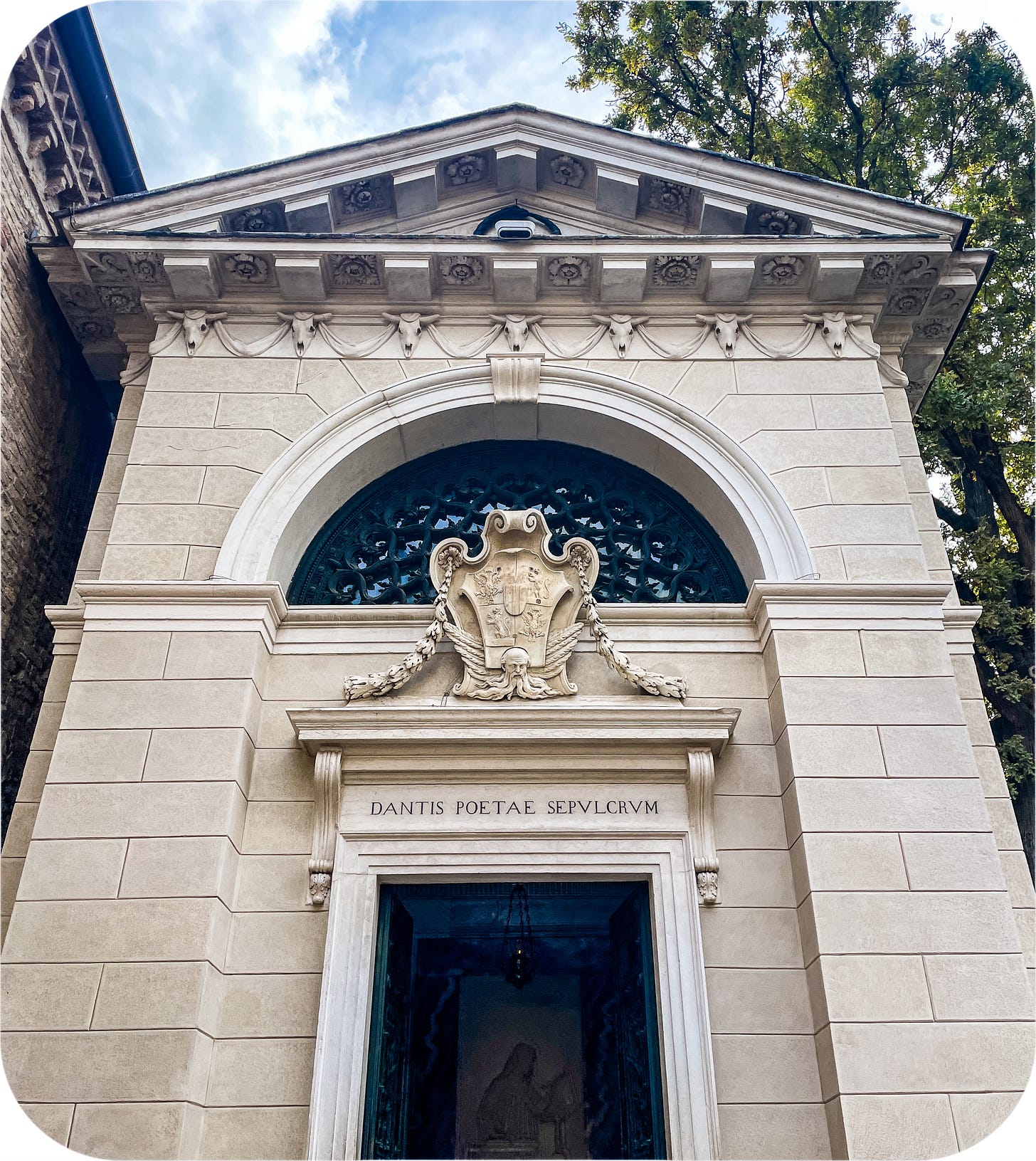
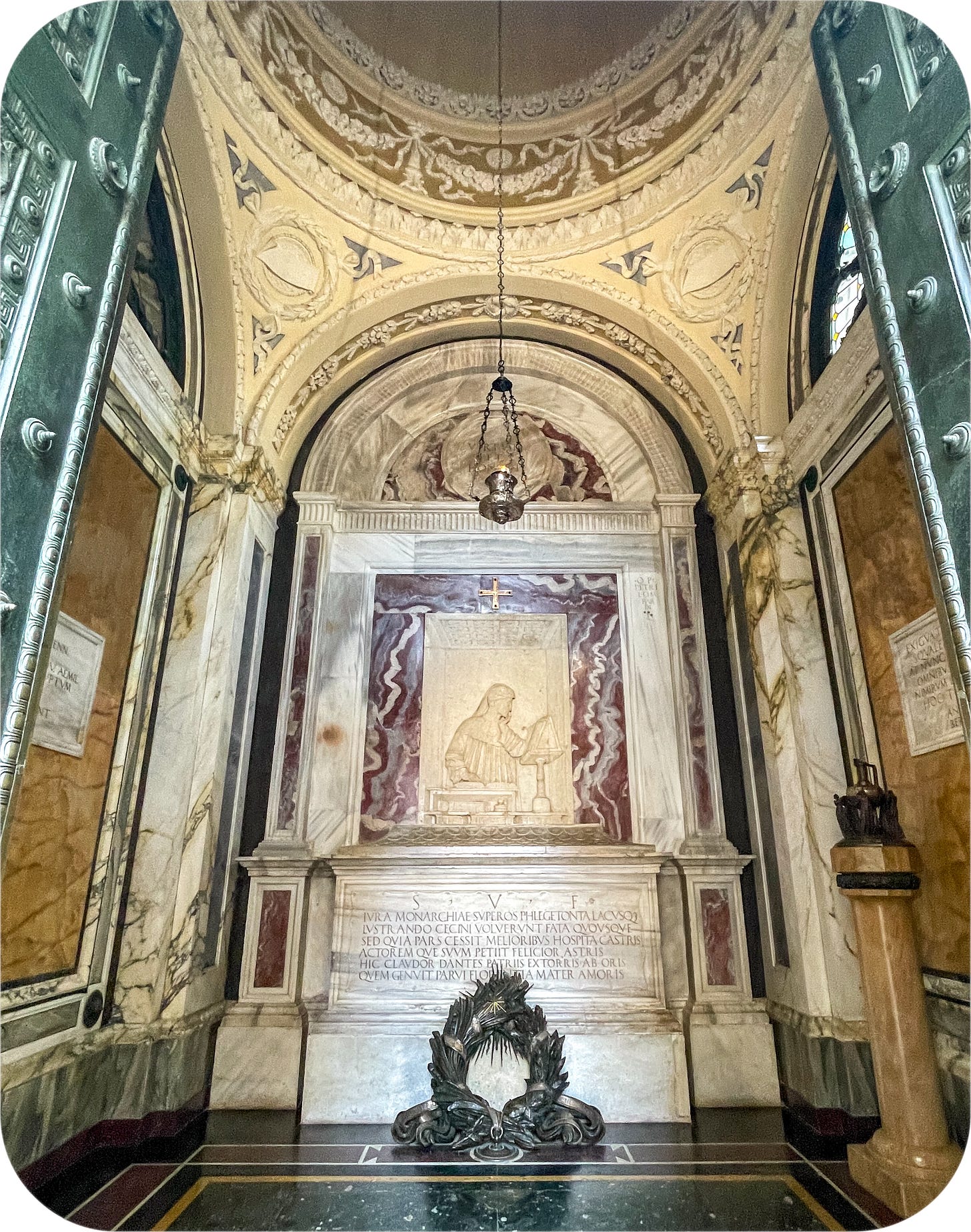

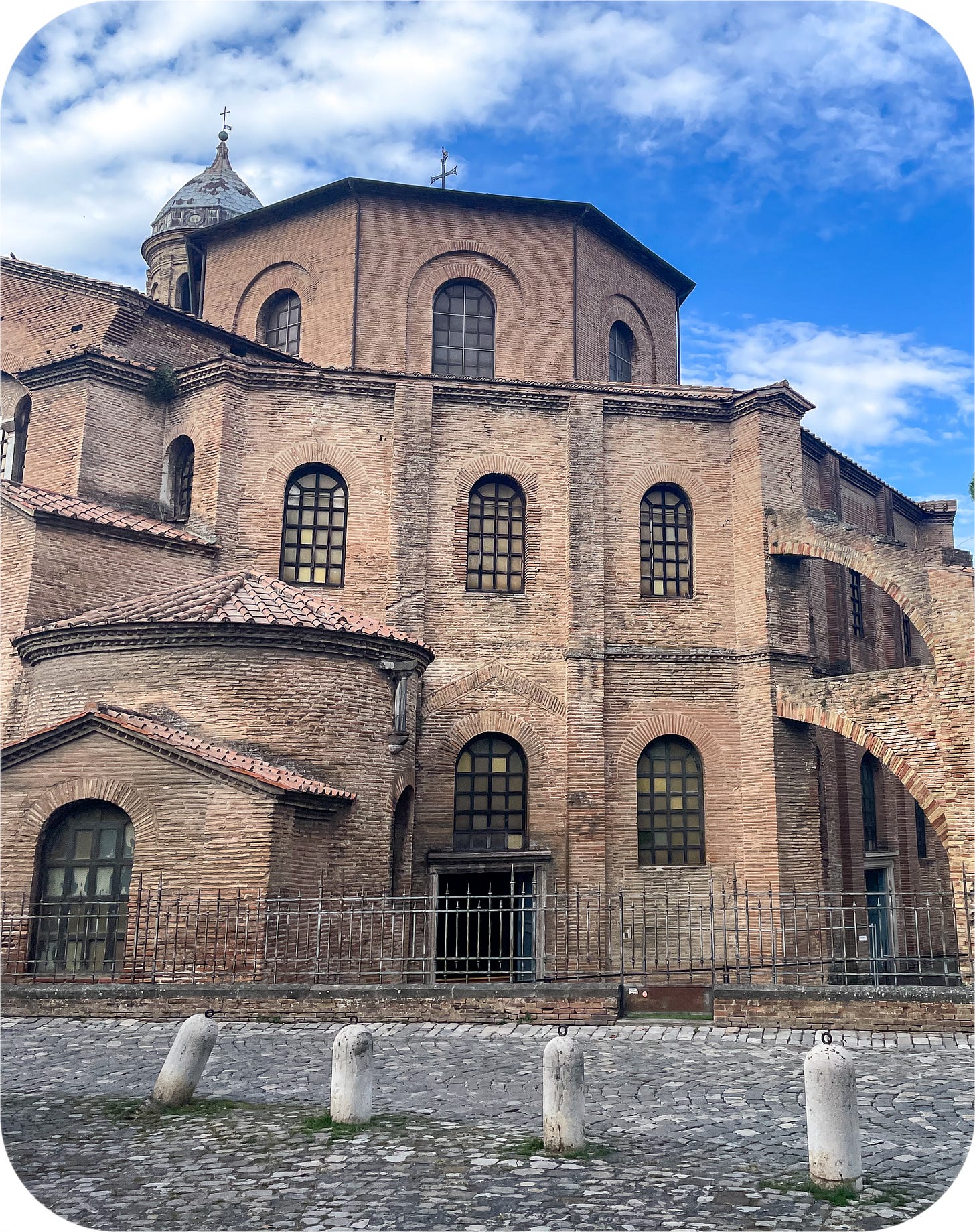


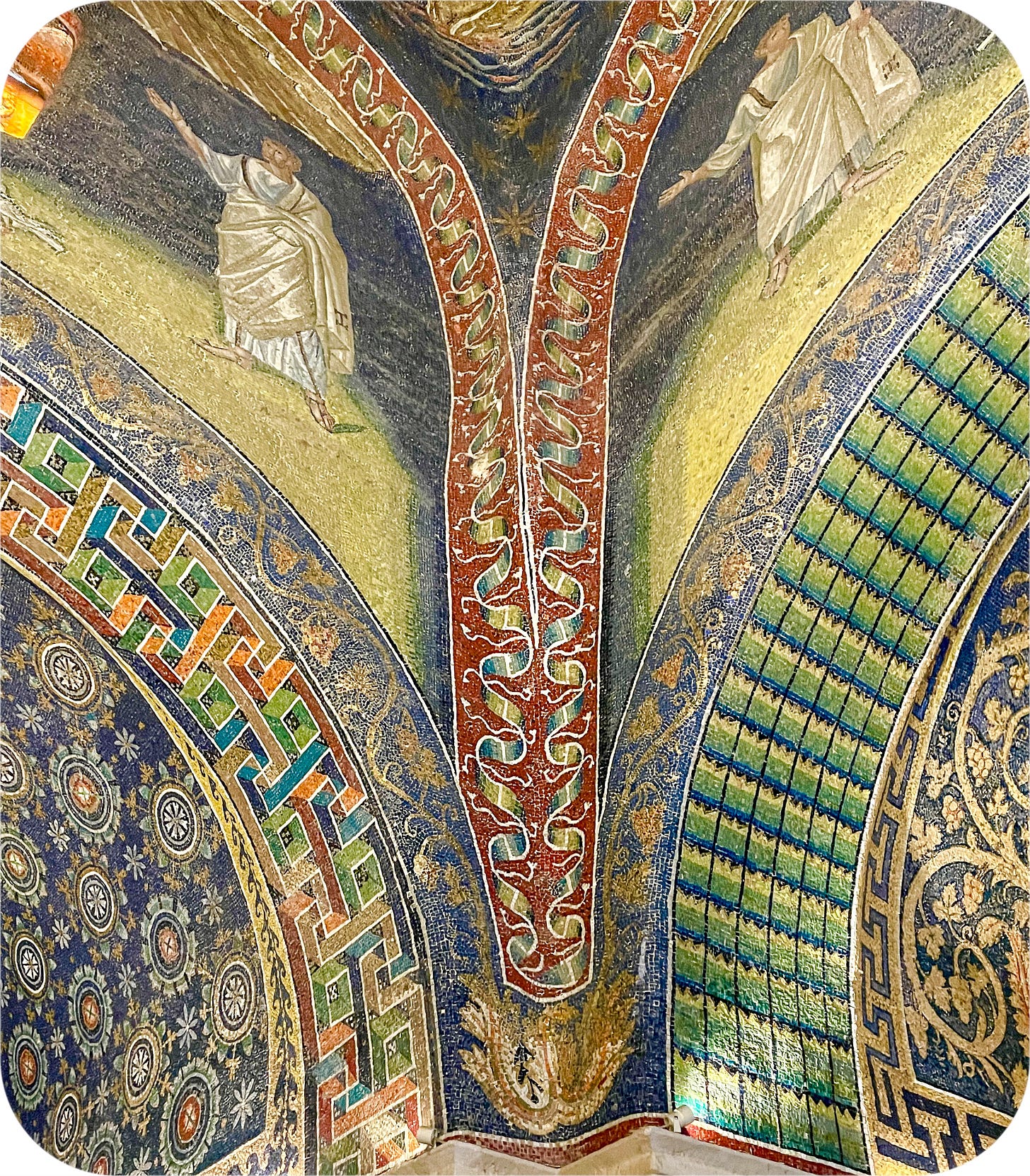

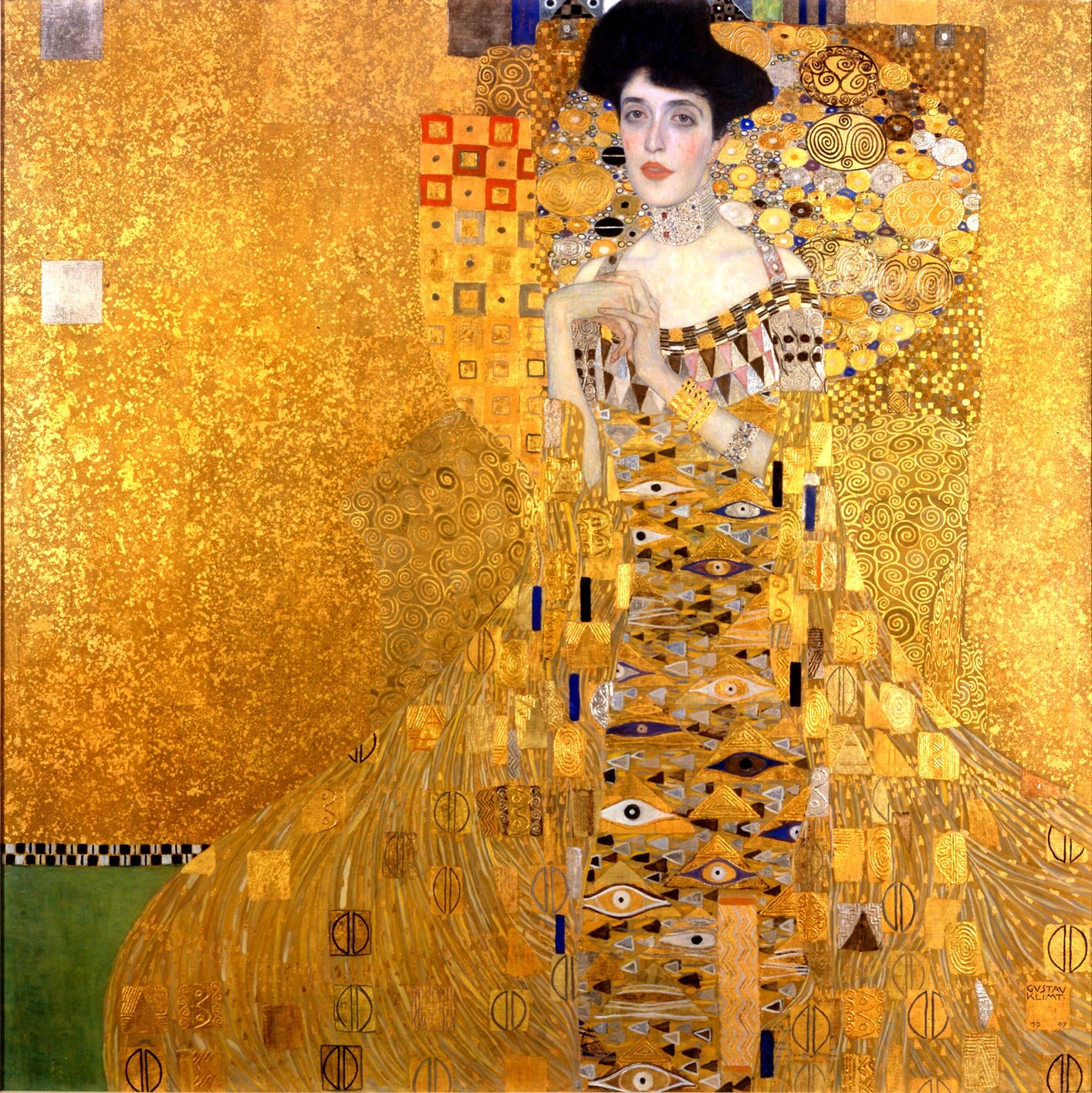
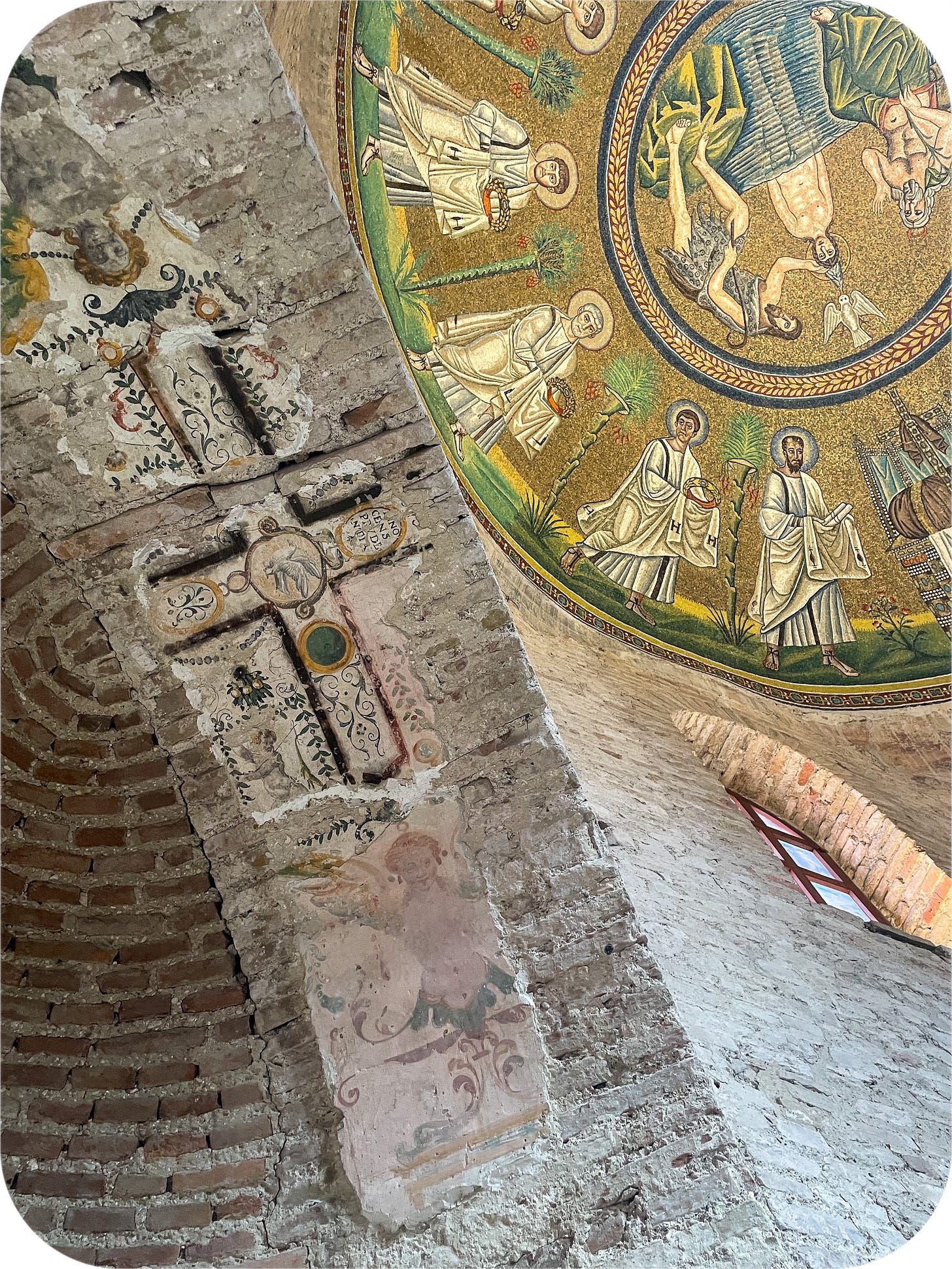

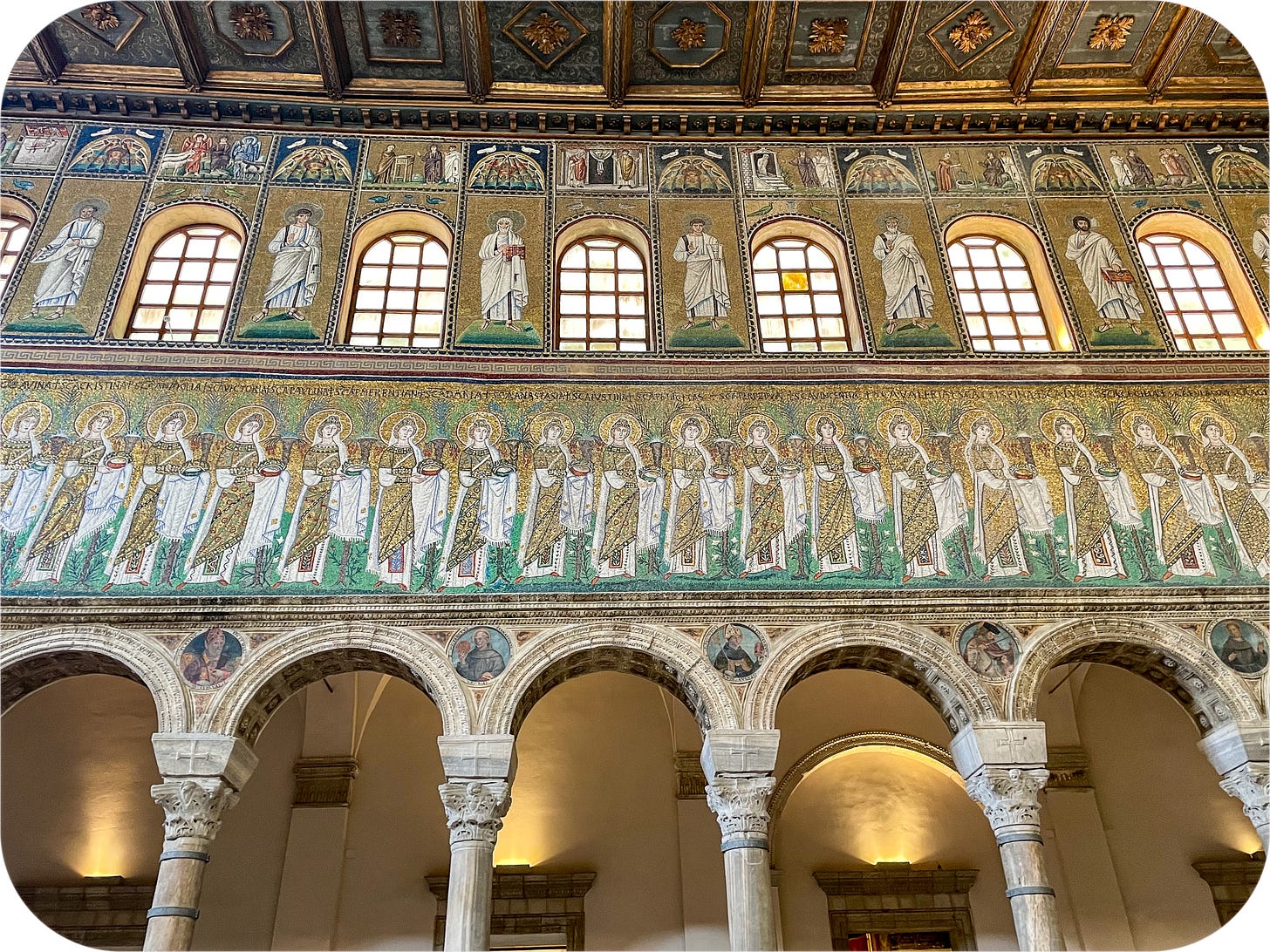

Exquisite photos! and I love the Dante stories. The Dante Zone and the misplaced bones had me laughing out loud. Your pieces often delight me with their sly humor. Thank you for that and for bringing me there with you!
Wow, how absolutely amazing. Thank you so much for taking me back to Ravenna this week, coffee on its way.